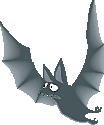| There are many pages on the internet giving general information on the well known caves in Malaysia. However the purpose of this website is to cover the more scientific aspects of the caves and to include some of the research that has been done.  Malaysia has some of the biggest and longest caves in the world, some caves are archaeological sites, others are beautiful with stalagmites and stalactites, and maybe underground rivers. Some caves are home to a wide variety of cave fauna such as bats, swiftlets, snakes, and invertebrates. These include insects, spiders, beetles, cockroaches, centipedes and millipedes.
Amongst the most famous caves in the world are the caves in Gunung Mulu National Park, Sarawak, which was inscribed as a World Heritage site in 2001. More than 362 km of cave passage had been mapped in Mulu by 2011. Some of the caves there are world record holders, such as Gua Nasib Bagus, which houses the world's largest chamber (by area), Sarawak Chamber. Clearwater Cave is the 8th longest in the world, at 222 km (Apr 2017). Deer Cave is one of the world's largest cave passages. Niah Caves, also in Sarawak, is a famous archaeological site. A 40,000 year old human skull was found there and rock paintings have been dated at 1200 years old.
Near Kuching, the Bau caves are worthy of a visit. Gomantong Caves in Sabah are reknown for their birds' nest industry. There are many other caves scattered across Sabah such as Madai and Baturong.
In Peninsular Malaysia caves can be found in all states north of Kuala Lumpur. The tropical karst towers occur as steep isolated hills rising from the valley floors. The Batu Caves near KL are a famous tourist destination and site of the annual Thaipusam festival. The nearby Dark Cave is one of the longest caves in the peninsula, and is home to a wide range of cave fauna. Perak has many cave temples as well as Gua Tempurung which is open to the public and is equipped with electric lighting and walkways. It has a fine river passage and some enormous chambers. There are many wild caves which can be visited by people equipped for caving. The Lenggong Valley is an important archaeological site, where Perak Man, an 11,000 year old skeleton was found. It was listed as a World Heritage site in June 2012, becoming Malaysia's 4th site and 2nd cave site.
Perlis has some interesting river caves, some of which have been mined for tin. Gua Kelam 2 is one of the Peninsula's longest caves and accessible to adventure cavers, likewise Gua Wang Burma. In Pahang there are the Charas Caves. The caves at Kota Gelanggi and Gunung Senyum. have been developed for tourism. There are caves in Taman Negara and Kenong Rimba. Kedah, Kelantan and Terengganu all have caves worthy of a visit. Many foreign spelaeologists come to Malaysia to document the caves and study the fauna etc.
In Kedah, the Langkawi islands have been listed as a Geopark (and Geopark) . Langkawi is now the world's 52nd Geopark and the first in Southeast Asia, following its listing in the UNESCO Global Network of Geoparks on June 1 2007. This status was extended in 2011 to 2015. In July 2008 it was announced that the name "Langkawi, the Jewel of Kedah" would replace "Langkawi Geopark", but the new name didn't seem to take effect. Currently the status of the geopark is under threat as UNESCO has issued a 'yellow card' warning "because of the local authorities failure to abide by conservation and sustainable practice requirements.". See more on s 2014.
Few caves are protected unless they come under the protection of a state park, or forest reserve, or are used as a recognised temple. Most limestone hills are classified as Stateland Forest and not legally protected. Some that do have protection are those in the Perlis State Park, in Taman Negara, in Kenong Rimba Park, Gunung Senyum Recreational Park and the Dabong caves in the Gunung Stong State Park.
Malaysia does not belong to any international cave associations. It opted out of the Union Internationale de Spéléologie (UIS) in 2005.
CAVE DATABASE
I have set up a DATABASE of limestone caves and hills in Peninsula Malaysia. This is based on information I have been collecting for more than 30 years. The hills and caves have all been given reference numbers. These numbers have been used by local cavers as well as international expeditions and in reports. This system is recommended to other current as well as future explorers. A published report is available as a cave register. I also keep a bibliography of cave references, which currently stands at more than 4550 references, excluding the newspaper bib. |
|
|


